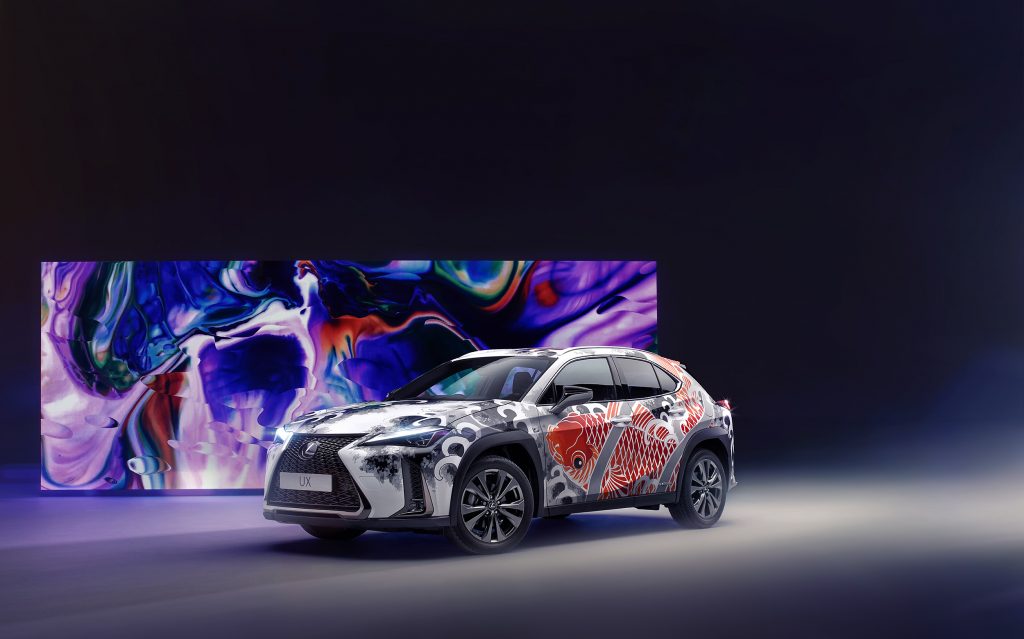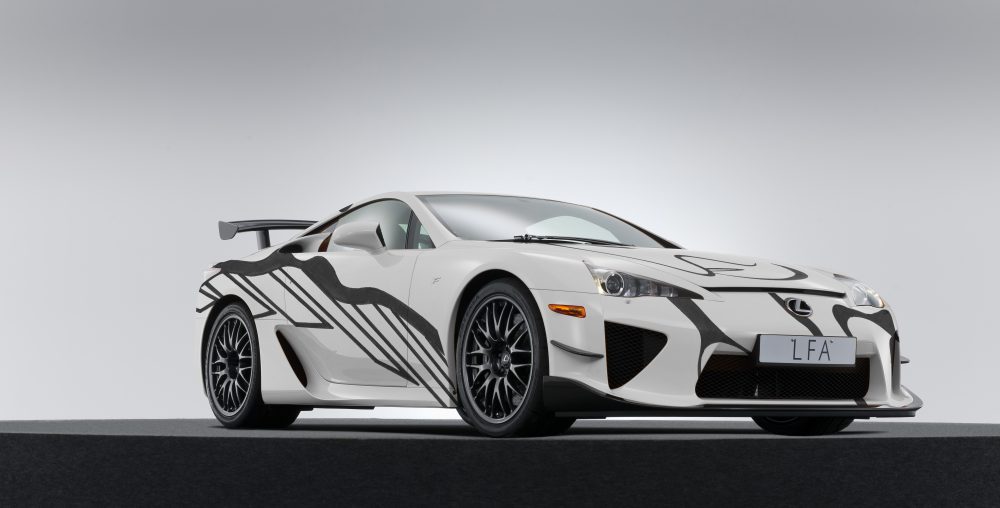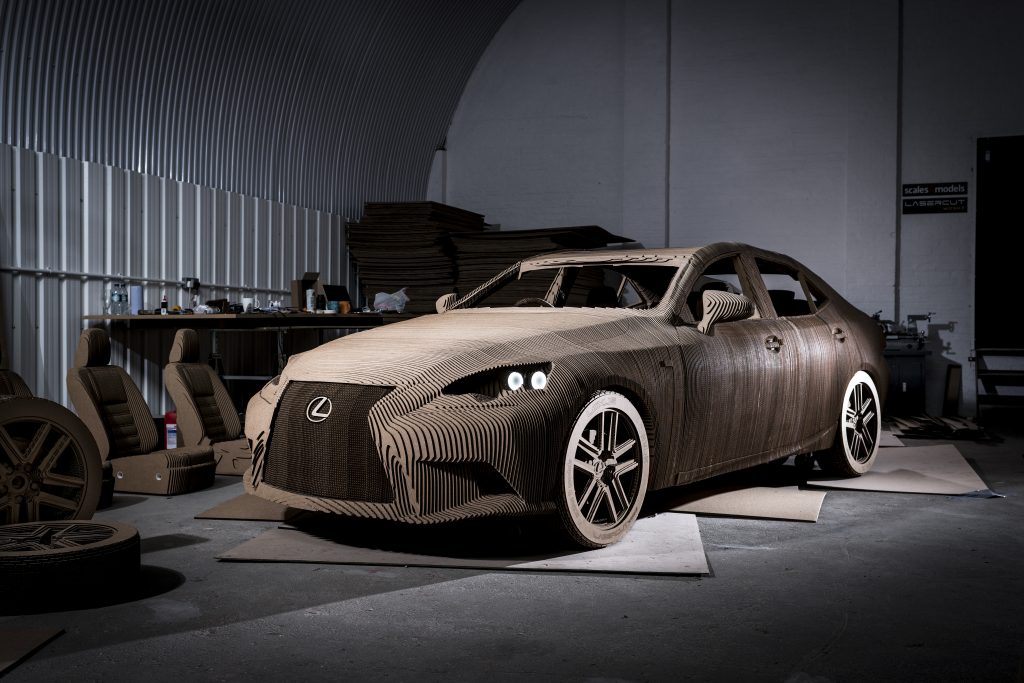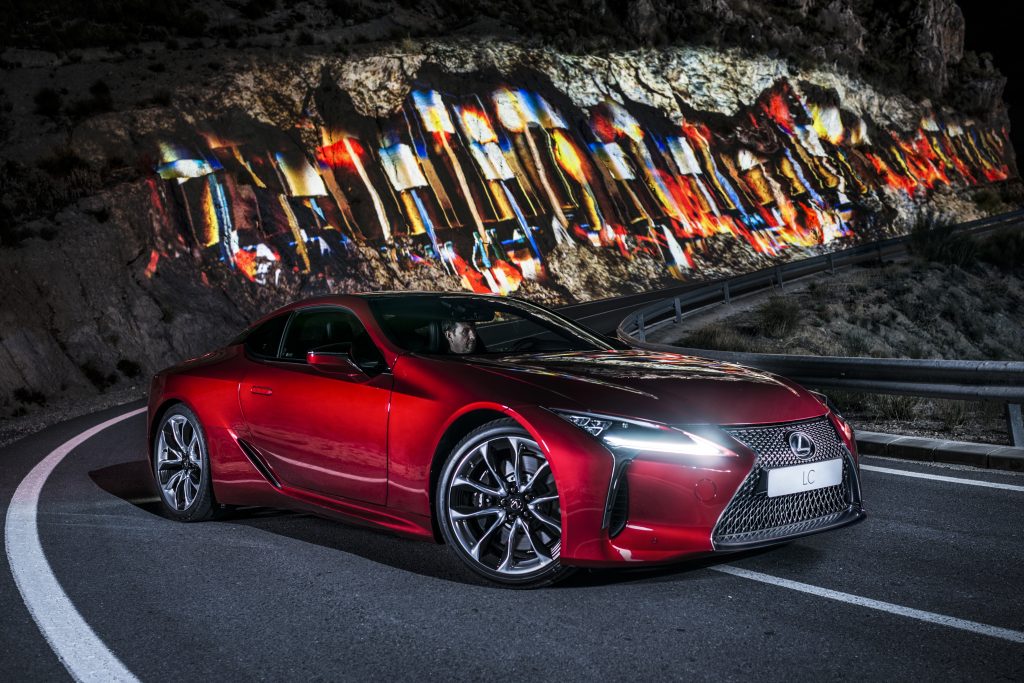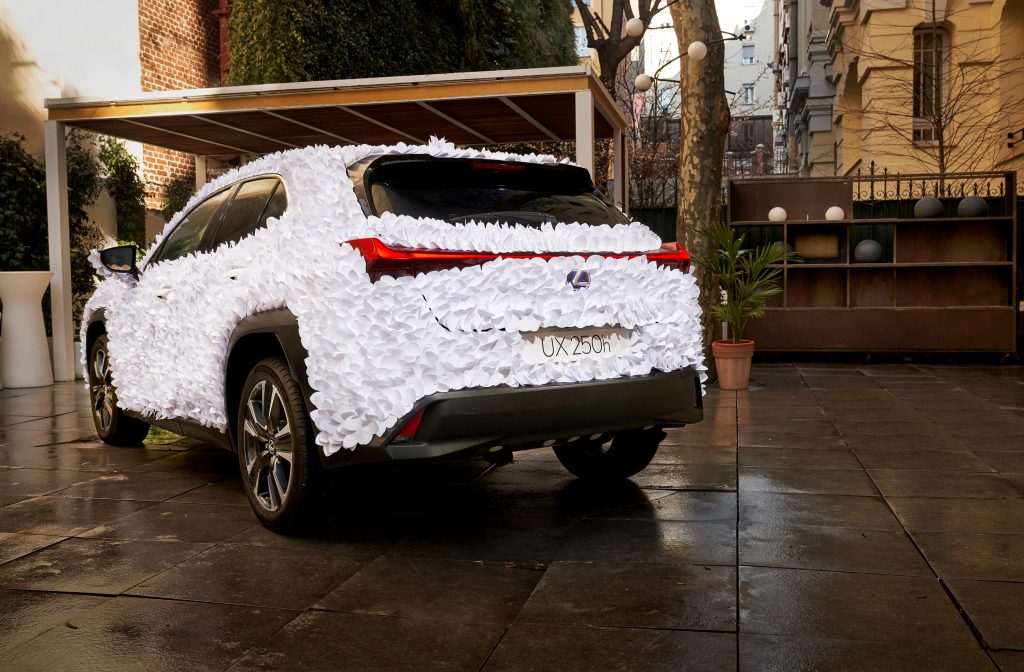The Car as a Canvas: Lexus Interpreted by International Artists
Lexus is proud to have developed signature design principles that capture the finest traditions of Japanese art and aesthetics, qualities that have been regularly explored and amplified by the work of international artists and creatives. With the recent announcement of the latest winner in the UX Art Car competition and the annual development of showpiece design installations for Milan Design Week, Lexus continues to generate artistic inspiration.
In the UK, Lexus commissioned the world’s first “tattooed” car, a UX urban SUV with a striking and colourful pattern of koi carp applied to its bodywork by artist Claudia De Sabe, using a Dremel drill. The project stood as a tribute to the takumi craftspeople who dedicate years to develop exceptional skills that validate the quality of every Lexus vehicle.
The influence of the koi – a Japanese art motif expressing good fortune and perseverance – was also witnessed in the winning entry in the first UX Art Car competition in 2019. Gyorin Kozane (Armour of Scales), by Spanish art duo Antoñito and Manolín, wrapped the vehicle in a red and blue organic mesh to create the look of the skin of a fish. Superimposing the material on the bodywork was their interpretation of the Japanese engawa concept that is features in the UX’s design – the creation of a seamless connection between inside and outside. This is expressed in the UX in the way the top of the dashboard appears to make a direct connection through the windscreen to the cowl.
This year the competition was won by a very different artwork, Zen Garden, by Clap Studio. They covered the UX in thousands of white petal-like paper cut-outs and placed the car in a traditional oriental garden setting. For the artists, the work captured the harmony Lexus seeks to achieve between nature and technology.
Lexus’s art car theme can be traced back to 2015 when British artist Shantell Martin covered an RC F coupe with stream-of-consciousness monochrome drawings to accentuate the car’s sweeping lines, commissioned as part of the brand’s sponsorship of New York Fashion Week. The ultra-rare LFA supercar has also benefited from artistic intervention, with a special version decorated by Portuguese artist Pedro Henriques to mark 10 years of Lexus’s “F” performance models in 2018. Henriques explained his inspiration was a sense of never-ending movement and fluidity, giving the car an organic feeling.
Since 2013, Lexus has had a major presence at Milan Design Week, the most significant event in the international design calendar. Alongside the presentation of the finalists in the annual Lexus Design Award, it has commissioned an original installation that captures essential qualities of the brand, its products and its philosophy beginning with Amazing Flow, by architect Toyo Ito and designer Akihisa Hirata. This communicated the sense of how people, cars and the elements will interact in the flow of a future urban environment. Earlier, in 2009, Lexus displayed Crystallised Wind, by Sou Fujimoto, an original interpretation of its L-finesse design principles, featuring an acrylic rendition of the LFA.
In 2016, the LF-FC hydrogen fuel cell concept car was central to Formafantasma’s An Encounter with Anticipation, inspiring a kinetic sculpture, items of furniture and a reshaping of the car’s bodywork.
In the UK, Lexus was inspired by the art of origami to create a full size, moving model of its IS saloon in cardboard. The one-off machine, created by LaserCut Works and Scales and Models, was unveiled at the 2015 Grand Designs Live exhibition. Similar artistically adventurous projects saw a Spanish mountainside brought to life with a projection mapping techniques to express the power and performance of the LC 500 coupe.
Lexus continues use its work and its status as a global luxury brand to achieve excellence in design and to support new and emerging creative talent.
ENDS

